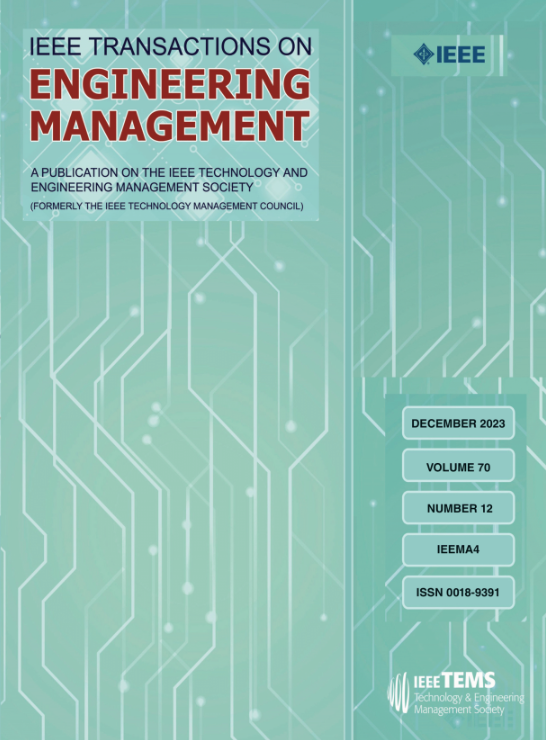接近中央合作伙伴?探索知识网络与协作网络动态的关联
IF 5.2
3区 管理学
Q1 BUSINESS
引用次数: 0
摘要
尽管对网络结果有相当大的关注,但对网络起源的探索仍然明显缺乏,更不用说伙伴网络动态的驱动因素了。随着网络的发展,一些学者与核心人物建立了联系,而另一些则没有。为了回答这个问题,本文旨在探讨学者的知识网络特征对他们与核心人物合作的影响。本研究利用Web of Science上2013年至2021年间发表的区块链相关论文,采用实证方法考察了知识网络中学者知识要素的中心性和结构洞与协作网络中合著者的中心性之间的关系。这些数据经过了仔细的处理,包括大量的关键词清理和作者消歧,以确保协作和知识网络的可靠性。进行了几个稳健性检验,以解决内生性,并确认跨替代变量测量和模型结果的一致性。研究结果表明:第一,学者知识要素的知识网络中心性与其合作者的协作网络中心性呈倒u型关系;第二,学者知识要素的知识网络结构洞与其合作者的协作网络中心性呈正相关。第三,学者知识要素的可替代性削弱了上述关系。综上所述,实现中心性的最佳平衡,战略性地弥合结构性差距,并保持这些知识要素的独特性,对于旨在培养与中心学者合作的学者来说至关重要。本文章由计算机程序翻译,如有差异,请以英文原文为准。
Approach Central Partners? Exploring the Association of the Knowledge Network With the Dynamics of the Collaboration Network
Despite considerable attention to network outcomes, there is still a significant lack of exploration into network genesis, not to mention the drivers of partner network dynamics. As networks evolve, some scholars form ties with central figures, while others do not. To answer this question, in this article, we aim to investigate the influence of scholars’ knowledge network characteristics on their collaborations with central figures. Using blockchain-related papers published between 2013 and 2021 from the Web of Science, this study employs an empirical method to examine the relationship between the centrality and structural holes of scholars’ knowledge elements in the knowledge network and the centrality of their coauthors in the collaboration network. The data underwent careful processing, including extensive keyword cleaning and author disambiguation, to ensure the reliability of the collaboration and knowledge networks. Several robustness tests were conducted to solve the endogeneity and confirm the consistency of results across alternative variable measures and models. The results are as follows: First, the knowledge network centrality of scholars’ knowledge elements exhibits an inverted-U-shaped relationship with the collaboration network centrality of their coauthors. Second, the knowledge network structural holes of scholars’ knowledge elements positively correlate with the collaboration network centrality of their coauthors. Third, the substitutability of scholars’ knowledge elements weakens the above-mentioned relationships. In conclusion, achieving an optimal balance of centrality, strategically bridging structural gaps, and preserving the uniqueness of these knowledge elements are critical for scholars aiming to cultivate collaborations with central scholars.
求助全文
通过发布文献求助,成功后即可免费获取论文全文。
去求助
来源期刊

IEEE Transactions on Engineering Management
管理科学-工程:工业
CiteScore
10.30
自引率
19.00%
发文量
604
审稿时长
5.3 months
期刊介绍:
Management of technical functions such as research, development, and engineering in industry, government, university, and other settings. Emphasis is on studies carried on within an organization to help in decision making or policy formation for RD&E.
 求助内容:
求助内容: 应助结果提醒方式:
应助结果提醒方式:


